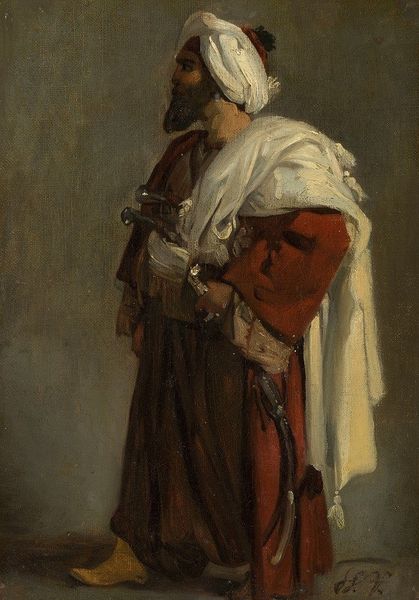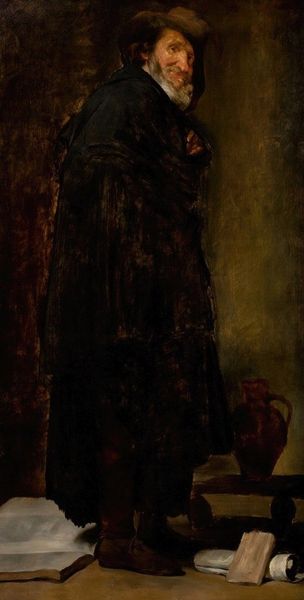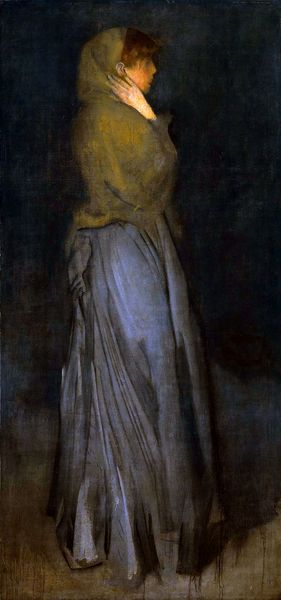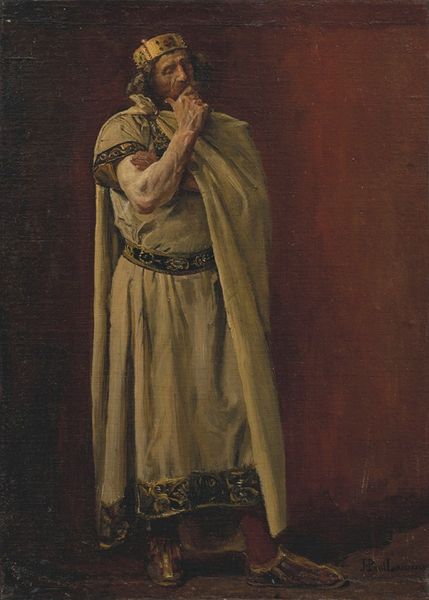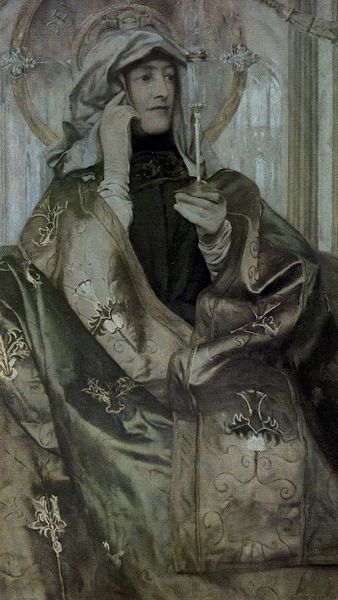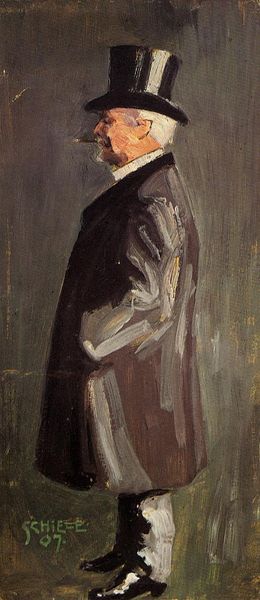
oil-paint
#
portrait
#
oil-paint
#
oil painting
#
portrait reference
#
orientalism
#
genre-painting
#
academic-art
#
realism
Copyright: Public domain
Curator: Here we have Alexandre Cabanel’s "Arab," held at the Museu Nacional de Belas Artes in Rio de Janeiro. Editor: It strikes me as both intimate and staged. The man’s gaze, averted yet knowing, amidst the layered fabric, conveys a curious tension. What are your initial thoughts on the formal arrangement? Curator: Cabanel's masterful handling of light and shadow creates depth. Notice how the composition directs the eye toward the sitter's face and draped form, utilizing realism typical of the academic tradition with orientalist tropes. I’d argue that this adds layers to our understanding. Editor: Let's consider that draped form. I find myself more drawn to the materiality—the interplay of the coarse texture of what appears to be heavy cotton or linen against the skin and its performative elements: its historical role within colonial dynamics. Are these materials readily sourced in France at that time? Curator: While specific sourcing records are not immediately available, we can certainly contextualize it through the rising popularity of genre painting. Consider that through portraiture like this, Cabanel presents an idealized image for the Parisian public. The arab is stoic but seems caught between the corner of two walls. Editor: Agreed. It invites us to question what we, as viewers, bring in our act of consuming such artwork. But the tension that it produces raises broader concerns about representation and labor—what are its links to imperialism and industrialization? Are the fabrics rendered truly from observation, or from memory, reinforcing dominant ideologies about orientalist people and places? Curator: These are definitely questions the painting elicits and complicate, particularly through Cabanel's academic style. His calculated brushstrokes, precise depiction, are very effective. These precise depictions also enhance a sense of authenticity for contemporary audiences unfamiliar with North African cultures. Editor: Precisely. Looking at the surface then reveals, not answers, but how images uphold larger frameworks. Perhaps it reveals, for us now, what remains concealed by technique and its historical reception. Curator: Yes, it is a potent piece that warrants interrogation into Cabanel’s choices, particularly how they might function or challenge cultural dynamics. Editor: A painting indeed richer, perhaps more relevant, through acknowledging these layers.
Comments
No comments
Be the first to comment and join the conversation on the ultimate creative platform.

